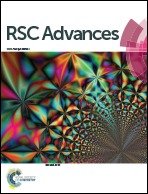Matrix isopotential synchronous fluorescence spectrometry for the determination of gibberellic acid in watermelon after ultraviolet-irradiation
Abstract
The determination of gibberellic acid in watermelon was performed by means of first derivative matrix isopotential synchronous fluorescence spectrometry in combination with photochemically induced fluorescence, without the need for tedious pre-separation. Its photochemical reactivity by effect of UV irradiation boosting the fluorescence is in agreement with the occurrence of photoaromatization and photochemical dimerization processes, with loss of carbon dioxide, and the probable formation of several fluorescent photoproducts. Watermelon extract presents a high native fluorescence, which drastically diminishes under UV irradiation treatment. The analyses were performed in 50% (v/v) methanol and pH 5 buffer solution, using 6 min as UV irradiation time in a flow photoreactor. The concentration of gibberellic acid in watermelon samples can be calculated by recording its total luminescence spectrum and applying the isopotential trajectory of the watermelon matrix that cuts the selected band of gibberellic acid. The unknown analytical signal of watermelon is eliminated in the matrix isopotential synchronous fluorescence spectrum obtained, by means of its first derivative. The calibration graph was linear between 40 and 200 ng mL−1 of gibberellic acid with a detection limit of 0.14 ng mL−1 and the obtained value of repeatability of the method was a standard deviation of 1.9%.


 Please wait while we load your content...
Please wait while we load your content...